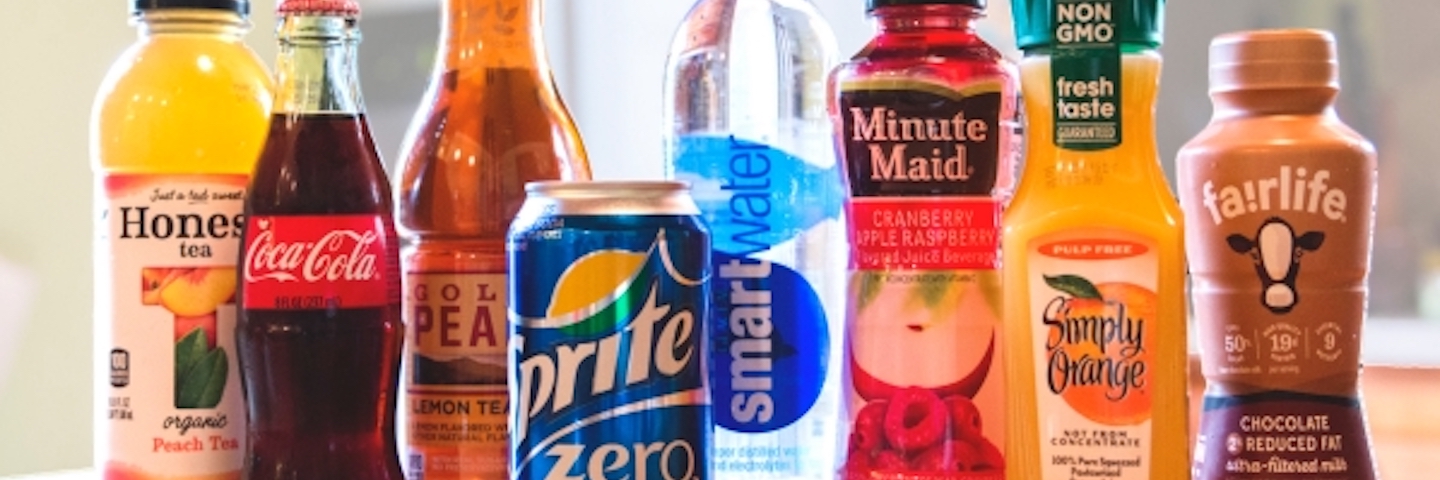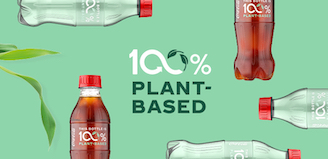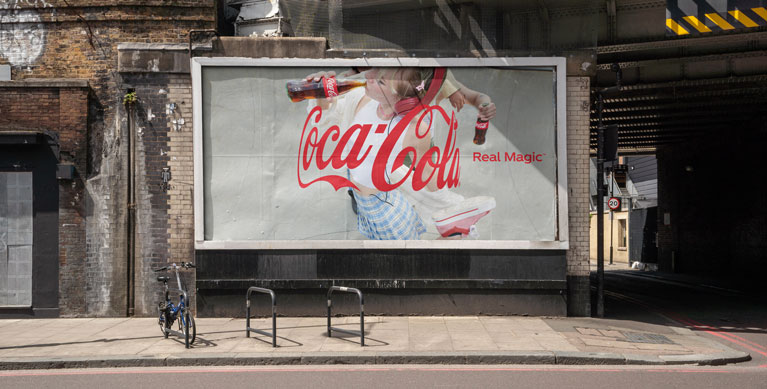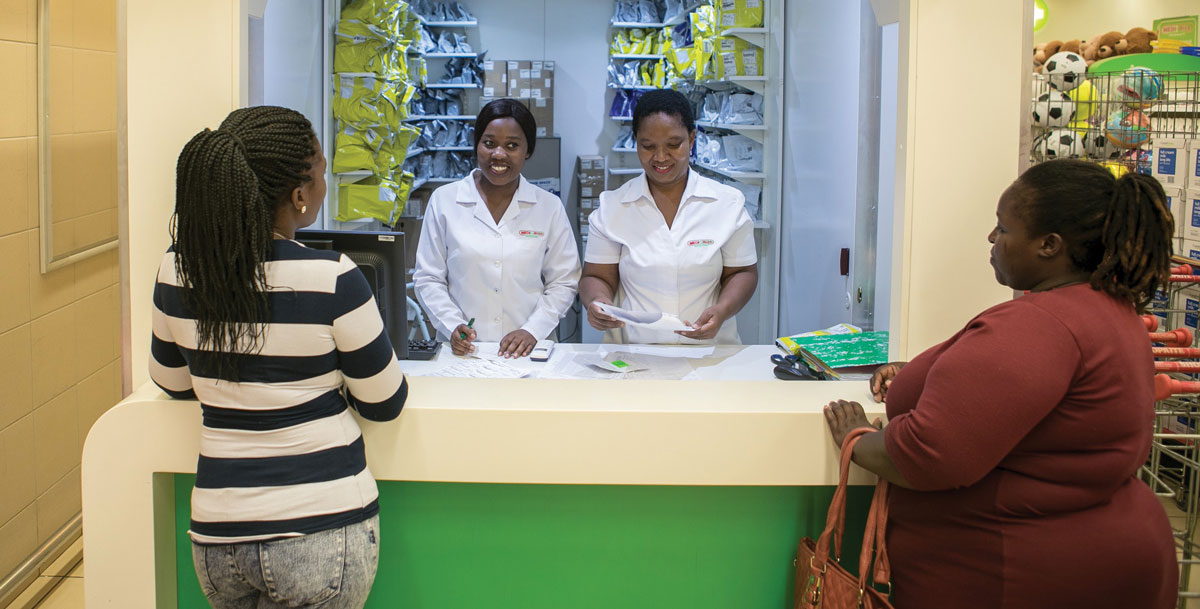
The Coca‑Cola Company Reports Strong Operating Results for Fourth Quarter and Full Year 2017; Achieves or Exceeds the Company's Full Year Guidance
02-16-2018
Net Revenues Declined 20% for the Quarter and 15% for the Full Year, Driven by Structural Headwinds of 26% and 17%, Respectively
Organic Revenues (Non-GAAP) Grew 6% for the Quarter and 3% for the Full Year
Fourth Quarter Operating Margin Expanded Over 315 Basis Points; Comparable Operating Margin (Non-GAAP) Expanded More than 530 Basis Points
Fourth Quarter Loss Per Share from Continuing Operations of $0.66 Driven by Items Impacting Comparability, Primarily Related to the U.S. Tax Cuts and Jobs Act; Comparable Earnings Per Share from Continuing Operations (Non-GAAP) of $0.39
Company Provides 2018 Financial Outlook, Including Update to Underlying Effective Tax Rate
ATLANTA, Feb. 16, 2018 – The Coca‑Cola Company delivered strong fourth quarter operating results and achieved or exceeded the Company's full year guidance in 2017. While reported net revenues continued to be impacted primarily by ongoing refranchising initiatives, the Company delivered broad-based organic revenue (non-GAAP) growth across all operating segments, as well as profit growth.
"I am pleased with our accomplishments and results in 2017," said James Quincey, President and CEO of The Coca‑Cola Company. "We achieved or exceeded our full year guidance while driving significant change as we continued to transform into a total beverage company. While there is still much work to do, I am encouraged by our momentum as we head into 2018."
Throughout 2017, the Company made progress in transforming the culture of the organization to be more nimble and entrepreneurial. The Company’s lean center initiative reshaped the corporate structure to support faster growth and empower field operations to act with more speed and independence. In the fourth quarter, the Company announced changes to its talent and compensation philosophy, placing a sharper focus on performance and future potential to drive long-term growth.
The Company also achieved major milestones in strengthening the system and returning to a capital-light organization, including a fully refranchised bottling system in the United States. Outside of the U.S., the Company refranchised previously owned bottling operations in China to local partners. The system's two largest bottlers in Japan merged, creating a single bottler covering the vast majority of volume in that key market. Additionally, the Company completed the ownership transition of bottling operations in Africa, temporarily acquiring majority ownership of Coca‑Cola Beverages Africa until it is refranchised.
Highlights
Quarterly / Full Year Performance
- Revenues: Net revenues declined 20% to $7.5 billion for the quarter and declined 15% to $35.4 billion for the year, impacted by headwinds of 26% and 17%, respectively, from the ongoing refranchising of bottling territories. Organic revenues (non-GAAP) grew 6% for the quarter, driven by price/mix growth of 4% and concentrate sales growth of 1%. The quarter included one additional day, which equated to an approximate one point benefit to organic revenue (non-GAAP) growth. For the year, organic revenues (non-GAAP) grew 3%, driven by price/mix growth of 3%.
- Volume: Total unit case volume was even for the quarter and full year. Developing and emerging markets generated positive volume growth for the second consecutive quarter, including volume growth in Brazil. While volume growth in developed markets overall was even during the quarter, North America volume grew 1%.
- Margin: Operating margin, which included items impacting comparability, grew over 315 and 55 basis points for the quarter and full year, respectively. Comparable operating margin (non-GAAP) expanded more than 530 and 350 basis points for the quarter and full year, respectively. Margin expansion was driven by divestitures of lower-margin bottling businesses and the Company's ongoing productivity efforts.
- Market Share: The Company continued to gain value share in total nonalcoholic ready- to-drink ("NARTD") beverages for the quarter and full year. Value share growth outpaced volume share performance, reflecting the Company's continued shift in focus to value growth from volume growth.
- Cash Flow: Cash from operations for the full year was $7.0 billion, down 20%. Full year free cash flow (non-GAAP) was $5.3 billion, down 19%. The declines were primarily driven by comparability items related to the refranchising of North America bottling territories, including the establishment of third-party receivables and cash restructuring charges.
- Share Repurchases: Full year purchases of stock for treasury were $3.7 billion. Net share repurchases (non-GAAP) totaled $2.0 billion.
Company Updates
- Impact of U.S. Tax Cuts and Jobs Act: The Tax Cuts and Jobs Act ("Tax Reform Act") was signed into law on Dec. 22, 2017. The Company supports the Tax Reform Act as it enhances the ability of U.S.-headquartered companies to compete globally on more equal footing including facilitating the free flow of capital. As a result of the Tax Reform Act, the Company’s effective tax rate for 2018 is now estimated to be 21%, reduced from the previously provided estimate of 26%. However, under the Tax Reform Act, the Company is required to pay a tax on historical offshore earnings that have not been repatriated to the United States. The charge related to this tax is partially offset by the revaluation of the Company’s net deferred tax liability position at the new federal statutory tax rate of 21%. The impact of these items resulted in a one-time net charge of $3.6 billion during the quarter ended Dec. 31, 2017, consisting of a repatriation charge of $4.6 billion and a deferred tax benefit of $1.0 billion. Additionally, the Company plans to reduce its gross debt level by approximately $7 billion with cash currently held overseas while continuing to maintain a net debt leverage ratio (non-GAAP) that is within the Company's targeted range of 2.0 to 2.5 times net debt to earnings before interest, taxes, depreciation, and amortization.
- Expanding the appeal of diets and lights: In January 2018, the Company announced plans to rejuvenate Diet Coke in North America with an updated look, new packaging, and the debut of four new flavors. The Company is re-energizing and modernizing Diet Coke for a new generation of drinkers, while also offering millions of current fans a new experience with a brand they love, without changing its formula and great taste. The changes to Diet Coke reflect the Company’s continued focus on innovation within sparkling soft drinks.
- Accelerating a consumer-centric portfolio: In September 2017, the Company expanded its Venturing & Emerging Brands ("VEB") model to Central & Eastern Europe in partnership with Coca‑Cola HBC AG. To date, the joint effort has shown early signs of success of the "lift and shift" approach through the launch of smartwater, ZICO coconut water, and Appletiser. This strategy, coupled with world-class innovation and bolt-on M&A, is expected to accelerate growth of the Company's expanding consumer-centric portfolio.
- Stronger focus on revenue growth: During the quarter, the Company continued to pursue Revenue Growth Management ("RGM") initiatives across key markets, including the South Latin and Central & Eastern Europe business units, which led to revenues and transactions growing ahead of volume. Throughout the year, the Company also continued to make disciplined decisions around profitable growth by deprioritizing low-margin water in major markets, including China, Japan, and Mexico.
- Re-energized system: The U.S. Coca‑Cola system is now fully refranchised after the closing of two important territories during the quarter. Liberty Coca‑Cola Beverages, a newly formed bottler, began operations in the former Tri-State Metro Operating Unit, and Reyes Coca‑Cola Bottling took on new bottling territories in the former West Operating Unit. The refranchised system is working to reinvent the future of the business, especially in key areas such as portfolio diversification, packaging innovation, production, procurement, and technology.
- World Without Waste: In January 2018, the Company announced new sustainable packaging goals to lead the industry in addressing the issue of packaging waste. One of these goals is to help collect and recycle a bottle or can for every one it sells by 2030 – effectively bringing back the equivalent of 100% of its packaging. With the help of partners, the Company is focusing on collection and recycling. The Company is also continuing to focus on the design of its packages to ensure they are 100% recyclable.
Notes
- All references to growth rate percentages and share compare the results of the period to those of the prior year comparable period.
- All references to volume and volume percentage changes indicate unit case volume, unless otherwise noted. All volume percentage changes are computed based on average daily sales for the fourth quarter, unless otherwise noted, and are computed on a reported basis for the full year. "Unit case" means a unit of measurement equal to 24 eight-ounce servings of finished beverage. "Unit case volume" means the number of unit cases (or unit case equivalents) of Company beverages directly or indirectly sold by the Company and its bottling partners to customers.
- "Core business" represents the combined performance from the Europe, Middle East & Africa; Latin America; North America; Asia Pacific; and Corporate operating segments offset by intersegment eliminations.
- "Concentrate sales" represents the amount of concentrates, syrups, beverage bases, source waters, and powders/minerals (in all instances expressed in equivalent unit cases) sold by, or used in finished beverages sold by, the Company to its bottling partners or other customers. In the reconciliation of reported net revenues, "concentrate sales" represents the percent change in net revenues attributable to the increase (decrease) in concentrate sales volume for the geographic operating segments (expressed in equivalent unit cases) after considering the impact of structural changes. For the Bottling Investments operating segment, this represents the percent change in net revenues attributable to the increase (decrease) in unit case volume after considering the impact of structural changes. The Bottling Investments operating segment reflects unit case volume growth for consolidated bottlers only.
- "Price/mix" represents the change in revenues caused by factors such as price changes, the mix of products and packages sold, and the mix of channels and geographic territories where the sales occurred.
- First quarter 2017 financial results were impacted by two fewer days, and fourth quarter 2017 financial results were impacted by one additional day as compared to the same periods in 2016. Unit case volume results for the quarters were not impacted by the variances in days due to the average daily sales computation referenced above.
About The Coca‑Cola Company
The Coca‑Cola Company (NYSE: KO) is the world’s largest total beverage company, offering over 500 brands to people in more than 200 countries. Of our 21 billion-dollar brands, 19 are available in lower- and no-sugar options to help people everywhere more easily control added sugar. In addition to our namesake Coca‑Cola drinks, some of our household names around the world include: AdeS soy-based beverages, Ayataka green tea, Dasani waters, Del Valle juices and nectars, Fanta, Georgia coffee, Gold Peak teas and coffees, Honest Tea, Minute Maid juices, Powerade sports drinks, Simply juices, smartwater, Sprite, vitaminwater, and Zico coconut water. At Coca‑Cola, we’re serious about making positive contributions to our world. That starts with reducing sugar in our drinks and bringing new and different drinks to people everywhere. It also means continuously working to reduce our environmental impact, creating rewarding careers for our associates, and bringing economic opportunity wherever we operate. In fact, together with our bottling partners, we employ more than 700,000 people around the world. For more information, visit www.coca-colacompany.com and follow The Coca‑Cola Company on Twitter, Instagram, Facebook and LinkedIn.
The fairlife® brand is owned by fairlife, LLC, our joint venture with Select Milk Producers, Inc., and fairlife’s products are distributed by our Company and certain of our bottling partners.
Forward-Looking Statements
This press release may contain statements, estimates or projections that constitute “forward-looking statements” as defined under U.S. federal securities laws. Generally, the words “believe,” “expect,” “intend,” “estimate,” “anticipate,” “project,” “will” and similar expressions identify forward-looking statements, which generally are not historical in nature. Forward-looking statements are subject to certain risks and uncertainties that could cause actual results to differ materially from The Coca‑Cola Company’s historical experience and our present expectations or projections. These risks include, but are not limited to, obesity and other health-related concerns; water scarcity and poor quality; evolving consumer preferences; increased competition and capabilities in the marketplace; product safety and quality concerns; perceived negative health consequences of certain ingredients, such as non-nutritive sweeteners and biotechnology-derived substances, and of other substances present in our beverage products or packaging materials; an inability to be successful in our innovation activities; increased demand for food products and decreased agricultural productivity; changes in the retail landscape or the loss of key retail or foodservice customers; an inability to expand operations in emerging and developing markets; fluctuations in foreign currency exchange rates; interest rate increases; an inability to maintain good relationships with our bottling partners; a deterioration in our bottling partners' financial condition; increases in income tax rates, changes in income tax laws or unfavorable resolution of tax matters; increased or new indirect taxes in the United States and throughout the world; increased cost, disruption of supply or shortage of energy or fuels; increased cost, disruption of supply or shortage of ingredients, other raw materials or packaging materials; changes in laws and regulations relating to beverage containers and packaging; significant additional labeling or warning requirements or limitations on the marketing or sale of our products; an inability to protect our information systems against service interruption, misappropriation of data or breaches of security; unfavorable general economic conditions in the United States; unfavorable economic and political conditions in international markets; litigation or legal proceedings; failure to adequately protect, or disputes relating to, trademarks, formulae and other intellectual property rights; adverse weather conditions; climate change; damage to our brand image and corporate reputation from negative publicity, even if unwarranted, related to product safety or quality, human and workplace rights, obesity or other issues; changes in, or failure to comply with, the laws and regulations applicable to our products or our business operations; changes in accounting standards; an inability to achieve our overall long-term growth objectives; deterioration of global credit market conditions; default by or failure of one or more of our counterparty financial institutions; an inability to renew collective bargaining agreements on satisfactory terms, or we or our bottling partners experience strikes, work stoppages or labor unrest; future impairment charges; multi-employer pension plan withdrawal liabilities in the future; an inability to successfully integrate and manage our Company-owned or -controlled bottling operations; an inability to successfully manage our refranchising activities; failure to realize the economic benefits from or an inability to successfully manage the possible negative consequences of our productivity initiatives; failure to realize a significant portion of the anticipated benefits of our strategic relationship with Monster; inability to attract or retain a highly skilled workforce; global or regional catastrophic events, including terrorist acts, cyber-strikes and radiological attacks; and other risks discussed in our Company’s filings with the Securities and Exchange Commission (SEC), including our Annual Report on Form 10-K for the year ended December 31, 2016 and our subsequently filed Quarterly Reports on Form 10-Q, which filings are available from the SEC. You should not place undue reliance on forward-looking statements, which speak only as of the date they are made. The Coca‑Cola Company undertakes no obligation to publicly update or revise any forward-looking statements.


